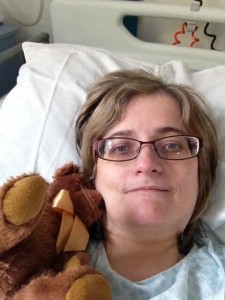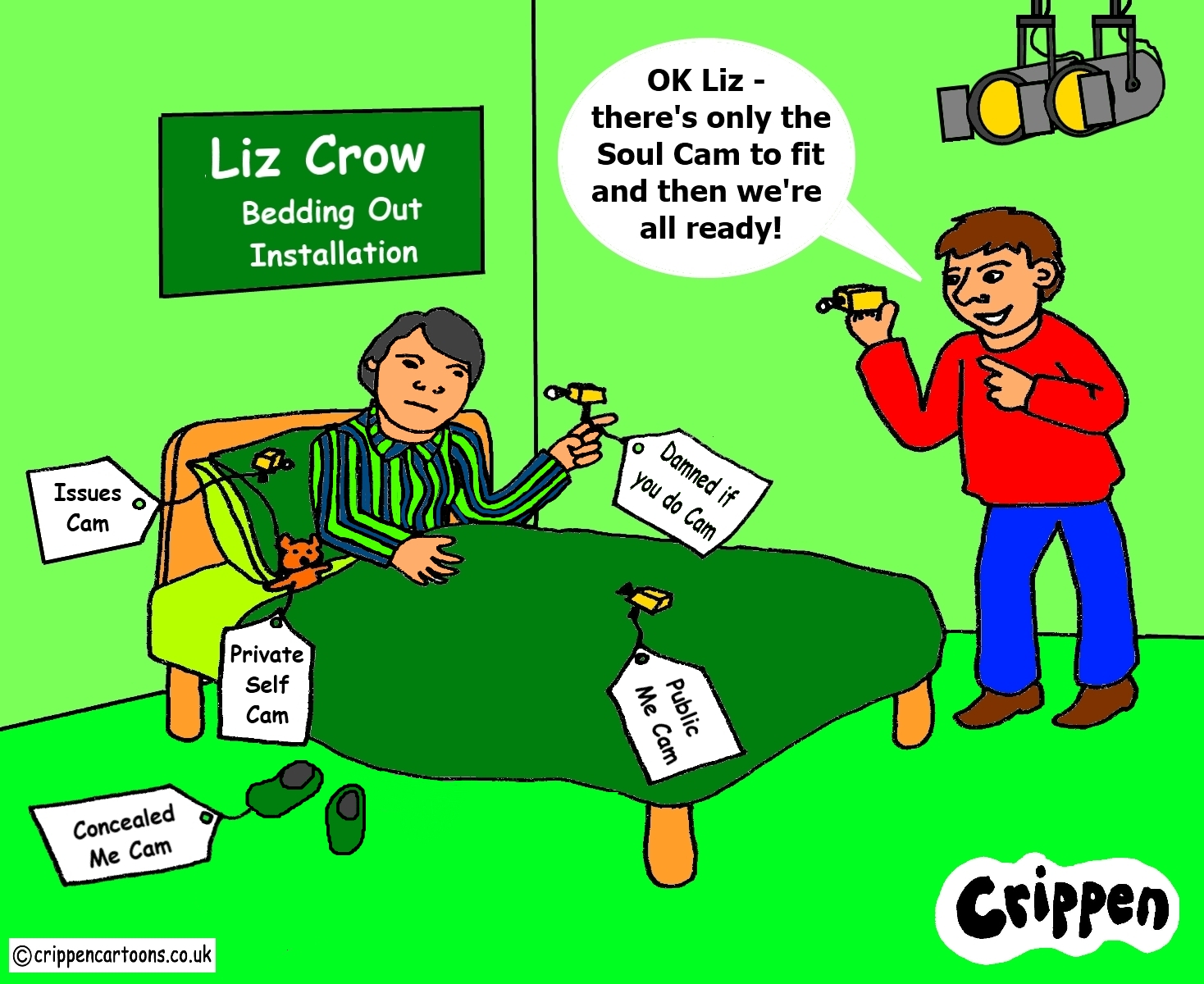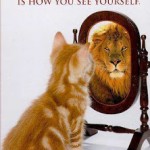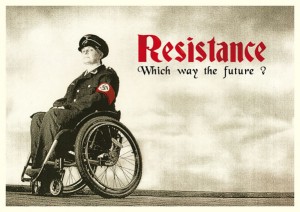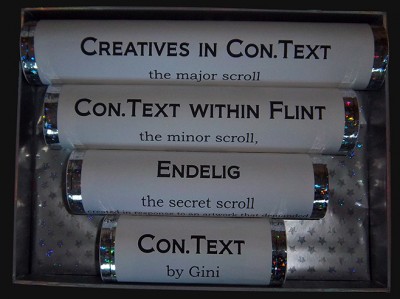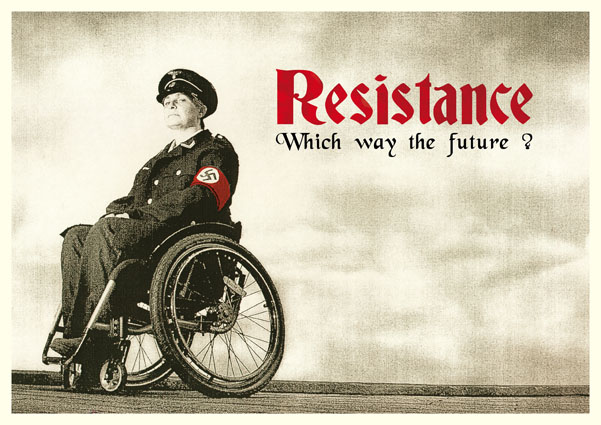Author Archives: Dawn Willis
Article from Jo Verrent: ‘Bedding Out: When Taking to Your Bed Is Both Activism and Art’
Is it time for a national Bedding Out guerrilla action? #beddingout
Our #Beddingout Competition…it wasn’t how we imagined, and that’s OK. Announcing a winner!
You may recall that as part of ‘Bedding Out’ at Salisbury Arts Center this month we hoped to create a huge visual map to highlight the hidden and private lives of people affected by disability.
We asked for your interpretation of a what your ‘bed-life’ is because it was in context to the work Liz was creating with the live performance from her bed.
When I thought about the idea of a visual competition I thought that for many people the risk of revealing themselves is too great because it’s too personal, too real. Opening a door into your private world, when we are already facing increasing hate crime, and where internet trolling is rampant, was perhaps too big an ask.
What I can say is that despite not being able to create a huge visual masterpiece Bedding Out reached over 80 countries around the world. We are amazed by that figure and happy to have been involved with chatter on twitter with folks from as far away as Australia and Japan!
However, back to that competition, there were entrants, photos, videos and even blogs… and we have a prize.
Since we can’t decide who should win on the basis of who is better at #beddingout, because that’s just plain weird, we’ve decided we’d go on how someone unaffected by a disability and who had no direct connection with the entrants felt impacted upon them most.
So, as decided by 18 year old student Natalie Miles, and Mr Andrew Carter (Engineer) we have a winner….
Sincere thanks go to Chris Evans (twitter @Onlyfluffyone) for allowing others to see that which no-one usually gets to see … Congratulations! https://www.youtube.com/watch?feature=player_embedded&v=_N7rpizgUL8
We truly don’t mean to sound cheesy when we say we feel everyone who jumped into bed with this idea and the competition is a winner, because you are.
Thank you for continuing to shout, tweet, blog and demand that people listen to the voices of the disabled – you guys rock!
On #beddingout from @Dr_vole
‘Disabled, my arse’ a video from Kristina Veasey @tippyscarecrow
Kristina Veasey
Remarkable and moving: ‘A Life With Post Traumatic Stress Disorder’ #ptsd #mentalhealth #beddingout
#Beddingout is in The Guardian – have a read, and remember it all starts tomorrow!
Awesome ‘Stonebird’ Video for BEDDING OUT!
Carole… and a stairway to happiness she can sometimes only dream of. A video for #beddingout @CC_Me_AND_ME
R Skye @LonAitewalker “my space usually has a cat in it; how many cats has a correlation to how crap I’m feeling” >Only one today? #beddingout
@fp_em Ema and Timmy – “this is what #beddingout means to me”
Helen is #beddingout from her hospital bed……
‘Reminding myself why’ by Liz Crow #beddingout
On the eve of Bedding Out, there’s mounting excitement in the twittersphere and my stomach is looping the loop. Will the work do something? (Will my body do what’s needed?) Will people join in and make the project work?
I am back at the eve of my Fourth Plinth performance in Trafalgar Square. Then, it was the uncertainty of performance that proved its power. Then, it created a starting point, a moment, where the onlooker was confronted with questions and a place where other campaigners and activists could gather and usethe opening it provided.
I remember then, as anxiety created its own momentum, stopping it from running out of control depended on my returning to the why: the absolute essence of what I am doing. It was there that clarity lay, and the guts to see it through.
So here’s is the why of Bedding Out:
- It is the peddling of myths about disabled people and those in poverty that bear no relation to our lives as they really are. It is the notion of us, in and out of paid work, as feckless and shiftless, fraudster and scrounger, as workshy and morally bankrupt that ignores the many influences of a person’s capacity to work and sets us aside as ‘other’.
- It’s the use of those myths to justify cuts and introduce a system of benefits that ensure those who most need support are most likely to fall through the gaps.
- It’s the way those myths link to soaring hate crime, distress and even suicide, and yet are exploited for political gain. It is the way we must edit ourselves to stay safe.
- It’s the lie that austerity is caused by us when it comes out of inequality, and it’s the way that inequality only magnifies with government policies like these.
- It’s the way disabled people were the first, virtually unreported for the first two years, but we were never going to be the last. Now it’s unemployed people, poor people, single parents, immigrants, the under-25s; next it is to be people deemed to be earning too little.
- It’s the way that even as the poor are punished by income cuts, the rich are rewarded with income tax cuts and corporations with tax evasion condoned.
- It’s the way that good people are swayed by lies, or distracted by their own struggles, or silenced from speaking out for fear they could be next, or intimidated by increasingly aggressive suppression of protest.
- It’s the way that government policy, and the absence of opposition, threatens our futures, the way that it confines and divides and degrades us all. It’s the way that it punishes non-conformity, says we are motivated only by greed, unravels 30 years of disability progress, undoes democracy. It’s the knowing that there are better ways of working and contributing and living alongside each other if only we care to look.
- And it is the way some of us have banded together – in Disability People Against the Cuts, Spartacus, Black Triangle and more – in a sustained campaign of answering back. It’s about the awe I feel at the strengths that have emerged: the skills and strategies, alliances formed, deep compassion and resilience, and at new ways of campaigning from home and sofa and bed.
- It’s about the possibilities of all the different individuals and groups joining forces to create an opposition. It’s the way that a gathering momentum could yet create a collective and unequivocal cry of ‘Not in my name,’ until politicians of all parties realise they have no choice but to heed us. Which is also about hope and becoming part of a much bigger decision to shape a future that is so much better.
So that’s why. In Bedding Out, I am portraying a human story in its broader political context. It’s about combining with all the other voices to create a very different story of what it is to be us and to feed into the debate about what kind of society we want to be.
In the words of John Lennon, adapted, let’s start a revolution from my bed.
Join me. Read full article: http://www.disabilityartsonline.org.uk/liz-crow?item=1769
Chris Evans in a moving insight into her #bedlife for #beddingout. Warning: Contains #WarmFluffyBlankets :)
@Suey2Y (Sue Marsh) shares her bed life in a video for #beddingout
Hey, you, yes YOU, come sit by my bed and we’ll talk. #beddingout @salisburyarts http://bit.ly/YyxuRs
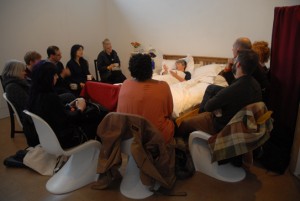 From Wednesday 10 to Friday 12 April, Salisbury Arts Centre hosts Liz’s Crow’s 48-hour round-the-clock live durational performance Bedding Out. As part of the performance, members of the public are invited to Bedside Conversations, gathering round the bed with a cup of tea to talk about the work, its backdrop, its politics. The conversations will be live streamed and recorded.
From Wednesday 10 to Friday 12 April, Salisbury Arts Centre hosts Liz’s Crow’s 48-hour round-the-clock live durational performance Bedding Out. As part of the performance, members of the public are invited to Bedside Conversations, gathering round the bed with a cup of tea to talk about the work, its backdrop, its politics. The conversations will be live streamed and recorded.
Please book for these Conversations in advance.
BSL interpreter and notetaker at all Bedside Conversations
Bedside Conversations will be livestreamed at www.roaring-girl.com
In addition, a Twitter-based Conversationwill be held on Thursday 11 April at noon. Please join in with hashtag #beddingout
http://www.salisburyartscentre.co.uk/whats-on/Event.aspx?EventID=665
@claireOT is #beddingout – she’s so lovely #ACertainSmile
Book now for: Disability, Arts and Diversity Symposium: ‘From the Personal to the Universal’. @SalisburyArts #beddingout
Disability, Arts and Diversity Symposium: ‘From the Personal to the Universal’
-
DATE
- Wed, 10 Apr 2013, 11:00 AM – 4:00 PM
-
COMPANY
-
LOCATION
Salisbury Arts Centre
-
TICKETS
£10 including lunch
- BOOK NOW
Live BSL interpretation and note taking
The current overhaul of benefits has intensified debate about who is disabled, and the necessity to ‘perform’ this identity to be validated. Meanwhile Disabled artists enjoyed perhaps their highest profile yet in the UK through Unlimited and other London 2012 Paralympics programmes. This symposium brings together artists, campaigners and producers to discuss the implications and opportunities for Disability Arts and its activist role in the wider social context. The artists exhibiting in ‘People Like You’ will also discuss the works in the show.
Speakers include Dr Sarah Bennett (Associate Professor of Fine Art, University of Plymouth); Hassan Mahamdallie (Senior Strategy Officer, Arts Council England); Marc Steene (Assistant Director, Pallant House Gallery and curator of ‘Outside In’); Jo Verrent (co-curator of ‘Push Me’, a programme around the 2012 Unlimited commissions); and the artists in ‘People Like You’.
Book Online by clicking the link below.
http://www.salisburyartscentre.co.uk/whats-on/Event.aspx?EventID=627
“I was so happy when they finally took the mattress away” from Eleanor #beddingout
“Hoists and other equipment: I’ve been quiet lately because I fractured my knee and ended up in hospital for a longish stay while they sorted out”
http://independentliving.over-blog.com/article-hoists-and-other-equipment-112813203.html
Carole: “how being housebound affects me.” #beddingout
“I’ve had M.E. for almost 15 years now, It came upon me very quickly after my husband and I went through our second attempt at ICSI…sp”ecialied IVF. I’d had Glandular Fever a few months before but I remember recovering from that quite well. It wasn’t until the drugs regime in our 2nd of three attempts that I noticed how ill I was becoming.” Read on…..
‘Tilda, John, Yoko, Tracey, Ron and me’ a #beddingout blog post!
“In my recent interview about Bedding Out for BBC Ouch!* , I was asked “So is this a sort of John and Yoko for PIP or more a sort of Tracey Emin-related activity?”
When I began to dream up Bedding Out, I kept bumping into John and Yoko and Tracey and began to wonder how many other have made art based on the bed. Quite a few, it turns out, though not many actually inhabit their beds or convey a sense of their bed as occupied.
This week, though, actor Tilda Swinton has hit the headlines, sleeping in a glass box in New York’s Metropolitan Museum of Modern Art, in a reprise of her 1995 performance The Maybe. You only have to read the comments sections in the press to know that this is the marmite of the art world, and whilst I can’t abide marmite, I find something deeply tender in this sleeping form made public, this voluntary act of vulnerability. Asleep in the gallery for several six-and-a-half-hour stints* over the year, the audience can linger as long as they choose in the privilege of the gaze.”
Read on….http://www.disabilityartsonline.org.uk/?location_id=2053&item=1760
Living In A Box – it’s art, its got folk talking! See for yourselves! #TheMaybe Tilda Swinton, #beddingout
Text me, watch me, tweet me, blog me, Facebookme, or even be right there at the bedside. No Barriers to #beddingout.
There are few barriers to being involved in the Bedding Out live event. Find out how YOU CAN be there.. http://www.roaring-girl.com/
Mental Gymnastics, an exhausting #beddingout blog post.
“As the week unfolds through emails, I realise that my assigned role in this interview will be to provide the ‘human angle’ on the benefits onslaught. It feels a risky game in which my ability to convince the viewer that I am ‘deserving’ will reflect on the validity of every other claimant and every other disabled person. This is a medium that relies on symbol and soundbite, on two-dimensional versions of who we really are. It is a style of reporting that almost guarantees I will be seen as either ‘saint or scrounger’ (to echo a current programme title), but almost never that more complicated, contextualised, living whole.”
Blog continues http://www.disabilityartsonline.org.uk/liz-crow?item=1753
Crippen #disabled cartoonist, Dave Lupton, immortalises ‘#beddingout’ #LikeMyPJs
Tilda Swinton. ‘The Maybe’. It’s #beddingout
Oscar-winning actress Tilda Swinton has revealed her latest role – sleeping in a glass box for eight hours at the Museum of Modern Art in New York…. (see more by clicking the link)
Sue Marsh on Labour’s Workfare Massacre.
“This morning, like the night after Agincourt, lefties like me scan the bloody, burnt out social media #workfare battlefield in the hope of finding twitching Labour corpses. There are none. Like the French 600 years before, a few generals at the top of the pile made the fateful decision to crush the weak and exhausted. Like the French, they were shown exactly why that’s often not a very good idea at all.”
http://diaryofabenefitscrounger.blogspot.co.uk/2013/03/yesterdays-labour-workfare-masssacre.html
@Spoonydoc show’s us hers! A #beddingout #bedlife pic and great article.
“Artist Liz Crow is currently performing ”Bedding Out”. During this she takes to a bed in a gallery for 3 days to show the hidden side of disability which no one usually ever sees. It is a reaction to the current welfare rhetoric.
As part of this she organised a photo competition #beddingout for fellow disabled people who are also house or bedbound depicting their bed and what it means to them.
This really got me thinking. I’m not a particularly good photographer….. ” Keep reading @Spoonydoc … http://bit.ly/14dUsWF
“In bed? Here in this place? A bed on the stage..” A Con.Text snippet #beddingout
“In bed? Here in this place?A bed on the stage andconversation? Justthe idea makes mesmile, but artist-activist?Are we ready for thathere? In Salisbury!”Gini
Liz Crow: “I can and will rely on adrenalin kicking in enough that I can deceive the onlooker.” #beddingout #RealLife
“Yesterday I was e-chatting to Liz about the forthcoming live performance of Bedding Out and found myself stunned when she said, “I’m under the duvet as I write this, my words slurring, sentences resisting the keyboard; not the best week.”she then went on to say, “I can and will rely on adrenalin kicking in enough that I can deceive the onlooker.” I was stunned because I hadn’t actually truly considered ‘Liz’ as someone who was juggling a disability and her work. YES, I knew Liz was disabled, I knew she was working, that she is a mother and all of those other things she is but somehow, because she wasn’t moaning, groaning, wearing her ‘pain face’, I’d allowed that reality of her life to disappear from own realms.”
read more…and join in as Liz is #beddingout
Do #disabled have to ‘act’ so in order to be validated? Surely not? #beddingout
Every single day it’s something new, another use of language to vilify the disabled and the poor.
This was posted today ‘stop drinking and smoking says a housing association’ in response to Government Bedroom Tax: http://bit.ly/115X1Jn
How do we counter these regular misrepresentations of the lives of the disabled? We live with words floating around our consciousness which we didn’t invite and most certainly do not deserve.
We need to be seen and heard in all mediums and measures. During our Bedding Out live event I hope these issues arise and that we can talk about them, dispel myths, create some understanding.
Words, they come easy to some and are not easily undone…….
workshy
lazy
scrounger
skiver
cheat
LET’S DISCUSS
‘Prayers to the Tech Gods’ – my latest blog for @disabilityarts #beddingout
Just four weeks to go now until my Bedding Out performance gets underway and the nerves are definitely kicking in…..
READ My latest blog!
“I’m Here To Be Seen” Liz Crow’s #beddingout Photo Competition is underway! Get clicking #disability #invisibleillness
It’s Competition time!
We have an exciting competition for you budding amateur photography enthusiasts, video makers which could put your bed image firmly on our beddingout map – literally! I really want to see where in the world you all are and create a virtual ‘Bedding Out Involvement Map’. I’ve always wanted people to own the project and to feel as involved as possible, this is just one way in which we can highlight how many of us are currently genuinely affected by attitudes towards disability and the image being created by the media and our Governments.
Cameras at the ready, we are looking for your best colour photographs or videos depicting, symbolising, and even celebrating your bed. There’s a fantastic prize (well ok, maybe not fantastic, but it’s OK….)
 a £15 (or your Country currency equivalent) iTunes gift card.
a £15 (or your Country currency equivalent) iTunes gift card.
General rules of entry
Photographs/Videos should be submitted via Facebook page: http://on.fb.me/142Hsyb or to @RGPLizCrow on twitter, or if you prefer by email to tweetmeister, Dawn Willis, quinonostante@hotmail.com (in the subject box – Bedding Out ) – Please include your name, and where in the world you are..
No photographs/videos of people in rude, nude or compromising situations or indeed animals – we need to keep things clean!
Photographs/videos can be of any time of the year, any part of your bed, of you (clothes on), your view from your bed, your bedding, your teddy bear, something which represents what your bed means to you.
Must be original not from internet or whatever, because we’ll have those copyright police chasing our tails. It is your responsibility to ensure that any photographs/videos submitted have been taken with the consent of anyone who is identifiable from your photograph or film.
The closing date for the competition is Sunday 14th April 2013 . Entries submitted after this date will not be included.
A panel of 2 judges will pick the winner, their decision will be final.
Prize will be dispatched either electronically or by post within 5 days of competition ending.
Important: Entrants will retain copyright and moral rights in their submitted images and you will continue to be able to publish, sell, loan or otherwise use the photograph(s)/videos in any way that you wish. By entering the Competition, you are granting Roaring Girl Productions a perpetual, non-revocable, royalty free, non-exclusive, worldwide licence to publish or otherwise use the photograph(s)/videos in any media including, but not limited to, the following:
- publication of the photograph by Roaring Girl Productions on social media sites
- publication of the photograph on the Roaring Girl Productions websites
Get clicking, get your friends and family clicking. Let’s show the world We are here to be seen!
Ik moet hier worden gezien…..
Eu estou aqui ser visto
Ich bin hier gesehen zu werden
‘Broken Britain’ by Shaye “David, Your Promised I’d Be OK”
available to purchase from just 20P, all proceeds will be divided between small and community-based charities supporting homelessness, food banks and invisible illnesses. http://shaye.bandcamp.com/track/broken-britain
“First they came for the sick”.. Why I’m #beddingout to shout out, let’s make a noise! #disability #InvisibleIllness
“First they came for the sick, the so-called incurables
And I did not speak out – because I was not ill.”
I’m bedding out to shout out, and I really want you to join me…. Raise your voices, be heard!
Click the link ![]()
‘The Smoking Gun that shows the #Tories lied about ALL of their Welfare intentions.’ #disability
Read Diary Of A Benefit Scrounger for yourself…
http://diaryofabenefitscrounger.blogspot.co.uk/2013/03/the-smoking-gun-that-shows-tories-lied.html
We need protest, we need people to express their views in as many forms as possible.
You picked your bed, you gotta lie in it! #beddingout
From Dawn Willis:
“I recently bought a new bed. I spent days browsing the internet for deals. Thing is the bed had to be right. I wanted modern, sleek, cheap, a headboard that wasn’t padded and pink like my nan’s and a mattress which would guarantee blissful slumber, and all for around three hundred quid.
It was not easy, let me tell you. I could have a metal bed frame with iron headboard, not really built for resting my reading back on. Or I could have an ottoman storage bed, which I could hide my excess junk, never to be seen again because if I wanted to get to it I’d be dismantling the bed, and I’m far too lazy for that!
 My dream of throwing myself onto an immaculately made bed, covered in golden silk sheets and sinking into a marshmallow mattress enveloped in luscious quilted throws, whilst surrounded by delightful boudoir cushions was, all the while looking like I had just stepped out of a Vogue fashion shoot … was exactly that, a dream. Marshmallow mattress!! I’m far too old for that. Silk sheets? Expensive and slippery! And as for the Vogue me, well that’s serious fantasy!
My dream of throwing myself onto an immaculately made bed, covered in golden silk sheets and sinking into a marshmallow mattress enveloped in luscious quilted throws, whilst surrounded by delightful boudoir cushions was, all the while looking like I had just stepped out of a Vogue fashion shoot … was exactly that, a dream. Marshmallow mattress!! I’m far too old for that. Silk sheets? Expensive and slippery! And as for the Vogue me, well that’s serious fantasy!
So began the is it too hard or too soft mattress malarkey. I was getting away from a memory foam thing which seemed to forget I slept there and ensured every part of me ached next morning. There were extra firm, firm, medium firm, sprung, pocket, air pocket, spring, wring, cling… it was all very confusing. What was clear was I needed practical comfort, but it couldn’t have flowers.. or be blue, most certainly not blue, when I was made homeless and moving out I remember my blue mattress being heaved onto the removal truck and the memory doesn’t fit well with comfort I associate with ‘my bed’.
So your reading this and thinking something like ‘flipping eck it was just a cheap bed, how hard can that be?’ (‘hard’, do you see what did there?) Yet it was, it took me about ten days to decide, I got the platform from one place, the mattress from another. I wanted the best nest I could get for my money, but knowing that it has to last, needs to do the job because I can’t afford it not to.
Whilst I don’t have a ‘bed life’ my life is made manageable by having a place where I can rest well.
I guess writing this little missive has served to make me aware that there must be a massive emphasis of getting your bed right if it’s somewhere you spend a lot of your days, in both comfort and discomfort.
Can we talk about your beds? See your bed? Hear your bed buying dramas….?”
It really is all about #beddingout
I made my bed… I lie in it

Check it out! Interview with BBC Ouch!
‘#Disabled people need to be at the heart of Left Unity: here’s why’ by @MYHeardRadio
Diary Of A Benefit Scrounger from Sue Marsh, fighting the fight, quite often from her bed! #ESAendgame #beddingout
Sue MarshI have a rare form of Crohn’s Disease. I was diagnosed 21 years ago and have had many operations to remove strictures (narrowings in my bowel that grow like tumours) I suffer daily pain, often vomiting, malnourished and weak. I take mega-strong medications every day including chemo-style immuno-suppressants, opiates and anti-sickness injections. Sometimes I am fed into my central vein by tube, other times I can enjoy a nice meal out. I have children that I often can’t look after and a husband who often looks after me. Our lives are disrupted daily by the misery of a chronic condition.
Read and act: http://diaryofabenefitscrounger.blogspot.co.uk/2013/03/todays-esaendgame-request-important.html
A Mother’s Day Blessing
#Sleep – A Thought Provoked by Liz Crow Continuing #beddingout by Richard Downes.
When I used to practice writing with a passion, strong and heavy into the night I would wake up with sentences being formed in front of my eyes rather than dream in sound or in vision. It still happens sometimes. It happened again recently. The words appeared. They took poetic form…. read more….
http://www.disabilityartsonline.org.uk/Richard-Downes?item=1721
Welfare Reform? Rubbish! “It’s about justifying your existence all the time now” #wca #ESAendgame #beddingout
The Tallest Order
[vimeo http://vimeo.com/57217455]
“You, Me and The Bedpost”! #beddingout
http://www.roaring-girl.com/productions/bedding-in-bedding-out/
What is the bed story? #beddingout
“But she doesn’t want to stay in bed, ’cause it’s changed from something comfortable, To something else instead.” Jarvis Cocker [youtube=http://youtu.be/oCqZ31uBU7k]
“Continuing the pain”! Liz talks to @bbcouch Liz Carr and Rob Crossan on welfare cuts, #disability and #beddingout
“Continuing the pain”! Liz talks to @bbcouch Liz Carr and Rob Crossan on welfare cuts, #disability and #beddingout
‘People Like You’, featuring #beddingout opens today at Salisbury Arts! Yay! #Disability #Art #Activism!
And they’re off! People Like You, featuring Bedding In Bedding Out
Check it out!
Fri, 08 Mar 2013 to Sun, 10 Mar 2013
http://www.salisburyartscentre.co.uk/whats-on/Event.aspx?EventID=571
@RGPLizCrow, “#beddingout, it’s not just a performance, I am ill, and I have to square the consequences.” #activism #disability
Everyone was taking about beddism, bagism, ragism, madism when John Lennon and Yoko Ono,
on march 25, 1969, five days after their wedding, the duo climbed into the bed of room 902 at the Amsterdam Hilton and called the media.
They wanted to promote ‘peace’ and to influence their mostly younger following, the next generation. This was activism, powerful, symbolic and memorable. Their use of the media to promote their cause was groundbreaking. IMAGINE what they could have done with social media?
Liz says “Bedding Out Bedding In is not just a performance, not just art, it’s real, because I am ill. I have to consider when setting out to raise awareness of the current issues facing the disabled how I square the ‘doing it’ with the consequences on my health. This is something I really want to explore with the performance, and by the use of the twitter hashtag #beddingout.”
For many people who live, work, and manage a disability there is a huge chasm between how they present in public and what goes on behind the scenes, or the after effects of the efforts of being ‘well enough’ to perform a task.
Dawn Willis says “When people meet me they speak of a talkative, engaging, funny and lively person with an eagerness and enthusiam to ‘get invovled’ and rise to tasks. And quite possibly that is the facade I need to create in order to cope with managing in the outside world with a serious mental illness. It shocks people wen I say that following talks, or teaching I am unable to function in daily life for a few days. It’s the unwelcome payoff. But it’s something I understand has to happen if I am to be seen as a functioning member of this society.”
Its vitally important that the public are aware that the effects of welfare reform, managing care, planning a day can have serious ‘side effects’ when someone is already coping with illness or disability.
With Bedding Out we must explore this, talk about our experiences and through art, open eyes, and minds.
Please continue to get involved.
The twitter hashtag is #beddingout, I’m on twitter https://twitter.com/RGPLizCrow
(If you prefer there’s a Facebook Page for comments, art, pics and more http://www.facebook.com/pages/Bedding-Out-Live-beddingout/156862257803853 or you can text your comments to 07784 899514 (outside UK, remove zero, and add +44).
Looking forward to hearing from you…..
11 months waiting for a #wca tribunal, dark periods of stress.. #ESAendgame #beddingout
[youtube=http://youtu.be/DVRpYCLvGXo]
#Disability, Arts and Diversity Symposium: ‘From the Personal to the Universal’ #beddingout book now!
Disability, Arts and Diversity Symposium: ‘From the Personal to the Universal’
Wed, 10 Apr 2013, 11:00 AM – 4:00 PM
Live BSL interpretation and note taking
The current overhaul of benefits has intensified debate about who is disabled, and the necessity to ‘perform’ this identity to be validated. Meanwhile Disabled artists enjoyed perhaps their highest profile yet in the UK through Unlimited and other London 2012 Paralympics programmes. This symposium brings together artists, campaigners and producers to discuss the implications and opportunities for Disability Arts and its activist role in the wider social context. The artists exhibiting in ‘People Like You’ will also discuss the works in the show.
Speakers include Dr Sarah Bennett (Associate Professor of Fine Art, University of Plymouth); Hassan Mahamdallie (Senior Strategy Officer, Arts Council England); Marc Steene (Assistant Director, Pallant House Gallery and curator of ‘Outside In’); Jo Verrent (co-curator of ‘Push Me’, a programme around the 2012 Unlimited commissions); and the artists in ‘People Like You’.
Book online: http://www.salisburyartscentre.co.uk/whats-on/Event.aspx?EventID=627
Excellent Blog by Jo Verrent: Energy: the benefits of taking to your bed for arts sake. Read and Comment! #disability #beddingout
GINI: Creatives #Con.Text – conversations around access. #disability #mentalhealth #beddingout
Gini: ‘Creatives in Con.Text’
Commissioned as part of DAO’s Diverse Perspectives programme, based at Salisbury Arts Centre, and juxtaposing the motivations of creatives and their audiences, Creatives in Con.Text is grown from conversations around access in it’s very broadest sense. Con.Text pieces evolve through performance conversations to present research and evaluation as textual art.
Read more here! http://www.disabilityartsonline.org.uk/con.text Go see the work here: http://www.salisburyartscentre.co.uk/whats-on/Event.aspx?EventID=571
Text Us! We want to know what #BeddingOut means to you!
As I’ve began discussions about BeddingOut I’ve realised there need to be fewer barriers to participation, for example a lot of folks who are most affected by the subjects raised by the exhibition are quite often unable to use the internet. Some can’t afford to, other’s unable to and many simply don’t want to.
We have a twitter hashtag #beddingout, a blog, a Facebook Page, a real life exhibition and now, now we have a text number! I would dearly love it if you would share your thoughts, quotes, and chat to us using the number.
I’d like to be able to share what you say on twitter as part of our live feed and record of the events leading up to and during the live performance. If you would prefer to remain completely anonymous please type the phrase ‘MySecret’ before your text, and that way we will ensure your name, initials and any identifiable information will not be placed anywhere online.
OK – here it is:
07784 899514 (outside of the UK take away the zero and add +44)
Please respect our number and our Textmeister. It may take a while for a reply, so please do not worry. Please remember we cannot answer personal medical, welfare and social care questions, in emergency situations you still need to contact the relevant authorities..
WE WILL NEVER, UNDER ANY CIRCUMSTANCES, PUBLISH YOUR TELEPHONE NUMBER, SHARE YOUR NUMBER, OR BOMBARD YOU WITH UNSOLICITED TEXT MESSAGES.
#Salisbury Arts, presenting ‘People Like You’, and like you, and me. #disability #MentalHealth #beddingout
http://www.salisburyartscentre.co.uk/whats-on/Event.aspx?EventID=571
People Like You is a partnership between LinkUpArts, Disability Arts Online and Salisbury Arts Centre and features work by Gini, Sue Austin, Liz Crow, LinkUpArts and other artists.
- Salisbury Arts Centre
- FREE entry
People Like You is a purposefully participatory new touring show that tackles the subjectivity and perceptions of disability. Through performance, film, sculpture and audience interaction, it explores commonalities of human experience and conjures some very uncommon experiences of its own.
Gini’s Disability Arts Online commission ‘Creatives in Con.text’ digests conversations into multi layered text works. The title piece is formed of functional grab rails. Gini explains: “First offered to me by a man who followed it up with “…should be taken out and shot”, ‘People Like You’ is an enigmatic phrase made even more interesting by social media trends. [grab rails] are everywhere, often taken for granted…. I chose Shocking Pink to counteract the drab, unisex nature of the paraphernalia of disability.” Her other pieces include life size Soft Sculptures and ceramic collaborations.
Liz Crow reveals the hidden realities behind the public life of many disabled people with the deeply personal exposé, ‘Bedding Out’. During a continuous 48-hour performance she will be in bed in the gallery space, holding conversations with visitors in person and via Twitter.
Sue Austin’s ‘Creating the Spectacle!’ has been described by the Telegraph as ‘One of the most compelling images of the [2012] Games’. From 10 – 14 April, she will present an immersive installation filmed under the Red Sea, celebrating the wheelchair as a tool of freedom and creativity. Both Liz and Sue’s installations will be present in different formats throughout the show.
Find out when where and how by clicking this link….. http://www.salisburyartscentre.co.uk/whats-on/Event.aspx?EventID=571
Depressed and In Bed, it’s not coz you’re lazy… myth busting #beddingout #mentalhealth
http://www.psychologytoday.com/blog/charting-the-depths/201106/why-do-depressed-people-lie-in-bed
“If you’ve personally suffered from depression or known someone who has, you know that when people are really depressed, they have a strong urge to stay in bed.
Why do depressed people lie in bed? It isn’t because of great snuggle time under the blankets. It’s because depressed people can’t bring themselves to get out of bed. Almost any activity or task becomes a painful ordeal, even things as simple as taking a shower or getting dressed.

Beds are the location in the house most associated with inactivity
A perfectly able-bodied person can’t bring him or herself to rise out of bed. How does this happen?
The intuitive answer is that a lack of motivation is to blame. Depressed people are directionless because they are undercommitted to goals. Without goals to drive future behavior, current behavior becomes frozen for long periods. Beds are the most natural location for a behavioral pause, as the place in the house most associated with inactivity.
The intuitive answer is okay as far as it goes. The problem is that it just doesn’t go very far. It begs the question of how a person loses the desire to pursue goals in the first place. The answer involves a surprising theory that takes us closer to understanding how it is that low moods intensify into more serious episodes of depression.
First, we have to detour to contemporary evolutionary psychology, which tells us that moods have a function: Moods help us pursue goals efficiently. High moods help us to more vigrously pursue rewards. Low moods tell us when our progress towards goals is poor. Often, low moods first arise when we’ve hit an obstacle, or when an important goal is threatened. Our usual first reaction to a low mood is to redouble effort towards the blocked goal. If the goal still proves to be unreachable, the low mood will escalate. At some point, something has to give: Usually the person will give up, or scale back on the goal and/or move on to another activity that has a better pay off. Authors such as Randoph Nesse and Eric Klinger have made a powerful case for the utility of low mood. In a world where time, resources, and effort itself are all precious and finite, having an evolved mechanism to hasten disengagement from a failing goal is very important to survival.
These relationships between moods, goal, and effort hold for a variety of species. A bear fishing for salmon without luck in a favorite river bend uses low mood to help it move on to another spot. For better or worse, human self-regulation is more complicated because we can choose either to act or not to act on our mood. I believe that humans are the only species that can decide to ignore low mood and to continue pursuit of an unreachable goal. In a sense, this creates the potential for a stand off between the person and their ancient mood system. To resolve the standoff, the mood system must do something more drastic: It turns down the volume on goal pursuit, not only on the one goal, but on goal pursuit across the board. Eventually, when the mood system wins the result is flat-on-your-back depression, with fatigue, torpor, a lack of motivation, the whole nine yards.
So this alternative theory turns the standard explanation on its head. Depressed people don’t end up lying in bed because they are undercommitted to goals. They end up lying in bed because they areovercommitted to goals that are failing badly. The idea that depressed people cannot disengage efforts from failure is a relatively new theory. It has not been much tested in research studies. However, the idea is well worth exploring. It fits well clinically with the kinds of situations that often precipitate serious depression — the battered wife who cannot bring herself to leave her troubled marriage, the seriously injured athlete who cannot bring himself to retire, the laid off employee who cannot bring herself to abandon her chosen career despite a lack of positions in her line of work. Seeing these depressions in terms of unreachable goals may be useful clinically, and may help us better understand how ordinary low moods can escalate into incapacitating bouts of depression.”
The People’s Bed
Locally Picked Stone Pieces; 2005.
For ‘Art in Public’: International Artist Residency at the JNU Campus, New Delhi.
Bed Protest from @grrlalex #beddingout #disability #mentalhealth
Check out this great piece of bed protest art from Alex Drummond…
http://www.flickr.com/photos/designandmake/5459645792/in/set-72157624542466978/
Imagine…
‘Resistance on the Plinth: the why of it,’ by Liz Crow
Behind the Scenes
Resistance on the Plinth: the why of it
Written by Liz Crow
A version of this article appears in the Journal of Literary and Cultural Disability Studies, March 2011.
I am sitting in the basket of a cherry picker, draped in an ancient white bedspread, being driven forward on a JCB. Through the thick fabric I see spots of bright light and the amber of the vehicle’s warning strobe. We begin to rise and I am pitched into that moment when they close the plane door and there’s no going back; only a hundred times magnified.
So up we rise and rise, high above the plinth, before coming in to land. “Freaky, freaky”, says the previous plinther as the wrapped figure draws closer. Spotting the wheels of my chair, she subsides into mortified giggles. The cherry picker docks at the plinth and she welcomes me with a “Hello under there, whatever you are.”
I am wheeled backwards down the slope of the basket and onto the plinth, except that – oops – running out of time, I haven’t briefed anyone on how and immediately plunge into freefall, arse over tit. I lie there in a white shroud, my legs in the air, a foot away from a two-and-a-half storey drop. Now there is no going back.
The One & Other project was announced a couple of months earlier. Taking place on Trafalgar Square’s Fourth Plinth, home to temporary works of art, sculptor Anthony Gormley set out to create a “living monument that captures modern Britain”. For 100 consecutive days, 2400 people would each spend one hour, on their own, high up on the plinth.
In a public space bordered by military and valedictory monuments, there was something about the ordinariness, smallness and aliveness of a diversity of people redefining the space that touched me. In the words of Gormley, “Maybe we’ll discover what we really care about, what our hopes and fears are for now and for the future.”
While I lacked both the exhibitionism and courage to be a part of any such thing, we needed to make sure disabled people got up there. So I told my friends, put out a few notices, signed up my own name. When I was picked in the monthly draw, my bluff was called.
One & Other arrived at a time when I had spent 14 years deliberating and two years creating Resistance, a touring installation about the Nazi campaign against disabled people and its contemporary relevance. It coincided with the 70th anniversary of the start of Aktion T4, the little-known first phase of systematic mass-murder by the Nazis, which targeted disabled people and became the blueprint for the Final Solution to wipe out Jews, gay people, gypsies and other social and political groups. Disabled people’s resistance was pivotal in bringing the episode to a close. And even as I longed to lie down on the plinth and gaze up to the stars, I knew this was a moment that would never present itself to me again and it had to be well used.
I meet my marketing mentor, Ros Fry and we mull and wrangle over what I might do until… oh, how did we get here, because suddenly, in a throw away comment, we have an idea. How about going up in Nazi uniform? And we laugh, because even as we know it is beyond outrageous, beyond bold, it is also crystal that this is it. As a wheelchair user, I will bring together two potent and contradictory images – the swastika and the wheelchair – like repelling magnets and they will be displayed on all that the plinth represents: elevation, preservation, triumphalism.
On the internet, I find a photograph of a young Asian man, wearing a bright red t-shirt, a large swastika on his chest*. The image hits in three, almost-instantaneous, blows. First is the swastika, then the man’s skin tone and then the contradiction. In the blink of an eye, it shifts the ground from under me. He stands facing the camera, smiling. And it is all – everything about it – instantly wrong; almost an inner ear, out-of-balance sensation that keeps me questioning long after I have torn myself from the screen.
How easy it is simply to equate the swastika with evil and stop at that, but how much more intriguing it will be to take an image that represents one thing and, by changing its context, transform its meaning and use it to confront itself.
If my image on the plinth can achieve that, it will be extraordinary.
But in the midst of all this, there is me. It is not every day you dress in the symbol of hate and loathing. What if people look but forget to think? What if they think the uniform is me? As a friend puts it, am I prepared to become a centrefold for the Brtish National Party? I have no way to predict whether people will grasp the image – or whether they will throw bottles. A summer’s evening, pub closing time, is a risky time to find out.
It is odd to be doing something so different (so confrontational, so exposed) from my character. I shudder at the thought of wearing that uniform. I try to convince myself it is just fabric, but the meaning of the fabric, the intent within it, puts lie to that. I would happily recruit an actor to the role, but the place is non-transferable, so it’s me or no one.
I want to draw attention to this hidden history and commemorate the people who died in it. I want to make apparent the link between this extreme, stark episode and now. I want to create a starting point, a moment, where the onlooker might think what it means for them. My job is to knock people off balance, to pull the rug from under them, enough that they ask questions. The dialogue is for others to have; whilst some plinthers talk to their audiences, I make a decision to maintain silence and stillness so that the image dominates. This is a political work, effected through performance. The power will lie in creating an image that is static, yet live, and inviting response.
As with any work, there will be a point of letting go, a leap of trust. I can form the work, but it will be completed by its audience; it is they who will define its meaning (again and again). As I place this image in the public sphere, I make myself dependent on the audience’s willingness to engage; if they do, there is potential for it to soar.
I am joined by Art Director Dave Paul, who sources uniform and props. Together, we discuss design, choreography and timings, weather contingency, leaflets, press releases and web back-up. I map out the Square for its dimensions and attempt to predict visibility from different distances and angles. It is vital that my chair is in view.
I will be performing to two audiences. The first is in the public space, with the audience local, directly below in the Square, and the work performed live. The second, much larger, international audience will be via footage on the One & Other website, with camera angles mediated by their editors, streamed live and available for subsequent download in a permanent resource. The image needs to work for both the ‘upward gaze’ and the multiple cameras sited level with the plinth.
Clair Lewis of Direct Action Network (DAN) organises support on the ground. On the One & Other website, each plinther is allocated a page where they can introduce themselves and this gives me a chance to give a context to the work that will sit alongside the footage of my hour. Independent filmmaker Barry Seddon will be there on the night to make a short film4 about the work and its larger context for distribution on YouTube.
Practicalities help distract from the bigger fears, but I am afraid – enough that, the evening before, I realise I cannot do this. I am afraid of hurting people and I don’t want to be hurt.
Anxiety creates its own momentum; to stop it running out of control requires returning to the why – the absolute essence of what I am doing. The morning of my plinth day, a conversation takes me back to the beginning. I find myself talking with passion about the rise in hate crime, a population larger than Cardiff in institutions, children excluded from school, pre-natal screening, the race to assisted suicide legislation and the why is clear.
I try the uniform for size, but the jacket is so huge that it looks like a bad bandleader’s uniform. I face the possibility of creating a comedy act, knowing that that could be the worst thing of all. I ricochet once more: on-off, on-off. And then I remember the art director’s trick of gathering up surplus costume fabric in a bulldog clip to create a shape. The uniform is in place. The person assisting me steps back to look. Until now, the image has been expressed through words; now it is real and any uncertainty about its power melts away. “You have to do this,” she says. It is on.
Arriving some time before my slot, the sky is half-light, the spotlights on the plinth just on, the Square heaving on a warm Saturday night in August, and the plinth is so godamn high.
In the One & Other offices, we go through procedures and release forms in an atmosphere of disconcerting calm. Do they realise what I am doing up there? Oh yes, everyone’s been briefed: production crew, ground staff, webstream editors. Security is on alert and will surround the cherry picker as it crosses the Square.
Up on the plinth, the cherry picker moves away, leaving me there, alone and up above the Square. I feel the very edges of my heart, the muscular pumping of it, booming in my chest. And I gaze ahead through the fabric to the spots of light and down to my watch, thinking hold it, hold it, keep still, keep covered; another minute, another, and another after that, taking it in increments.
I know there is a collective holding of breath between me and my supporters in the Square, not all of whom know what will be revealed, only that it will be a representation of disability that goes against expectation. The popular perception is of disability as ‘worthy’ or ‘depressing’. Here is a community that longs for a counterpoint, an image that will cause passersby to look, and look again.
Ten minutes in and it is time to make them look. I throw off the shroud from my head and shoulders and body and chair, place the hat firmly on my head and now there’s a Nazi on the plinth, a Nazi with a wheelchair. And I look ahead, face set, half-focused far distance, no interaction with the onlookers; a symbol intended to steal their breath away.
Beyond the Square, an energetic virtual dialogue springs into action. One & Other staff will later report that Twitter “went ballistic”, the first tweet shouting: “WTF?” and a whole flurry of debate and conversation tracks the hour: the what and the why and how to find out more. The image has knocked people off balance, pulled the rug, and the dialogue is flowing.
At ground level, a team of supporters has made an informal ring around the plinth, so that each time anyone comes forward an explanation is ready. And people linger, watching and debating and sharing their experiences. When the leaflets run out, strangers pass them on to strangers and talk to each other about why. Clair shouts up to me “It’s alright Liz, they all get it!”
Revealing the next phase of the image, I pull out a flag from under my chair. On the flag are the words, black on red, of a verse by the anti-Nazi theologian Pastor Martin Niemöller. The version best known begins ‘First they came for the Jews but I did not speak out because I was not a Jew… Then they came for me and there was nobody left to speak out for me’. There is also a version that refers to the targeting of disabled people, with the words ‘First they came for sick, the so-called incurables’, and this is the version I use.
That recognition of a community’s experience, historical or contemporary, runs through the work and the collective bond was felt by disabled people in the Square and internationally. A presenter on BBC Ouch’s talkshow spoke of being in the Square and “before I knew it, I was giving out leaflets… it was lovely to be sucked into it”. A group of disabled people in Brisbane emailed to say they were gathered round a computer at 6am to watch communally. On the One & Other site, a disabled person from the Square wrote “To be part of large group of Proud Disabled People gave me ‘HOPE’. In a time of uncertainty and upheaval in our lives, coming together… gave me a very warm feeling.”
And as I raise the flag, a breeze unfurls the fabric high above the Square.
Beyond the plinth hour, the dialogue will continue through Twitter, Facebook, websites, blogs and far beyond. Comments on the One & Other website include “Your silent clarity caused me (I hope amongst many others) to question further my previous over-idealistic beliefs,” whilst a supporter from the Square writes that the hour “sparked lots of discussion and support amongst the people there who were initially surprised and confused at the striking and challenging image… People got it and knowing you are against nazi ideals made them smile… At least a thousand people were given a message most of them had never heard before. I hope they pass it on!”
It is time to shed that uniform, so I unbutton the jacket and pull off the armband, holding it aloft, screwing it up in my hands and casting it down to the plinth. I discard the jacket, bundled and crumpled and thrown down in disgust. I slide my loosely laced boots from my feet and sit, black trousers, black t-shirt, barefoot, to wave the flag, and it feels good.
With my red flag, I begin to emerge from the symbol. The breeze is snappy, so I raise that flag and steer it round so that it is visible from every angle. People passing by on the pavement alongside the Square stop for minutes at a time to read the text and contemplate the image.
The clock moves slowly; its speed varies. I mainly look up and fix on distant objects. As the hands turn, I feel distinctly odd; the building to my left, with its floodlit curved facade, begins to flip, convex-concave, convex-concave. I return to a far-distance gaze, checking on the flag, lining it up for passersby and camera, and breathing. When I catch the amber flash of the cherry picker making its way across the Square, I am ready, and the hour has also sped by.
My heart takes a week to return to its usual rate.
When I look back to that night, I feel the turmoil every inch of the way. While the image very quickly became not-really-me, it has lost none of its danger.
That danger lies in the possibility of misinterpretation, all those fears I barely contained in the run-up to the plinth. Yet it is the danger of the image that is its power.
Repeatedly, my work tells me that political change is driven by emotional connection; that it is the individual’s ‘buy in’ to an idea, or ideal, that opens them to becoming a part of change.
This image demands response; it keeps people looking, bombarding them with questions and confronting them with information and meanings they may never have encountered before. And as they look and consider and return again, that emotional connection builds. A softer image might raise the same questions, but is easily shrugged off; the visceral impact of this image and the dissonance it produces continue to demand.
An image can’t make social and political change, but it can open a door. My task that night was to create a starting point, a moment where the onlooker would begin to ask questions. The point at which the onlooker responds is the point at which others can step in – the activists, the academics, the campaigners, all of us involved in that much larger process of change can use that opening.
In Trafalgar Square, this is what the supporters did. Each time an onlooker responded with “What the -?”, they moved towards them to say “This is why”. They listened and talked, provided clarity and direction and, as they built upon the emotional connection, people began to shift from onlooker to ally.
The image didn’t finish the night it met an audience. As it continues to circulate and meet new audiences, my hope is that others will do what the supporters in the Square did and capitalise on that small opening. From the image-maker to the supporter to the onlooker, this is a process of collaboration.
______
* Although the swastika is an ancient sacred symbol that has existed across many cultures since prehistory, symbolising peace, life and good luck, it was appropriated by Hitler for the Nazi party and has become widely recognised as a symbol of hate. There are campaigns to reinstate its original meaning. However, the young man in the photograph wore the tilted, counter-clockwise version printed in black on a white circular background and on a red t-shirt, a combination usually associated with Nazi usage.
For further discussion see: Quinn, M (1994) The Swastika: Constructing the Symbol, Routledge.




